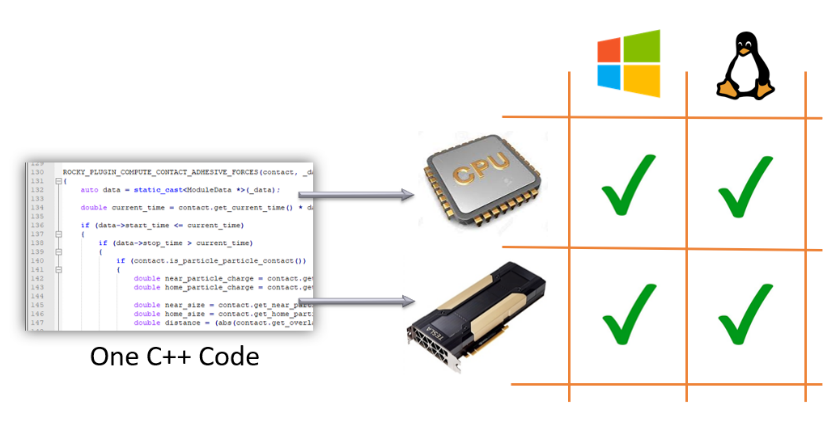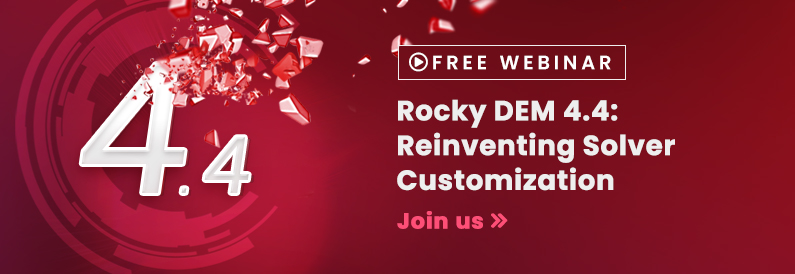[研討會]Rocky-DEM 4.4 新版發表,CPU/GPU合一,增強API客製化功能 發佈日期 2020-08-27
Rocky DEM 4.4 delivers a totally new Solver Application Programming Interface (Solver API) based on the most-recent technology for customization and user experience integration. The result delivers unique usability, portability and, above all, solver performance.
What’s different in Rocky DEM 4.4’s Solver API?
User experience
All models implemented with the Solver API also modify and extend the setup and post-processing software interface. In the setup stage, to enter custom model input parameters, the software dynamically generates a visual interface; in the post-processing stage, all new custom variables are automatically available for detailed analysis. This enables seamless deployment of custom models built by experts, all across the corporation.
A single code for both multi-CPU & multi-GPU solvers
The Solver API provides a unified approach so users can program models by enabling just one single code to be compatible with both Rocky DEM solver technologies. This substantially reduces the cost involved in maintaining custom routines or learning complex GPU programming techniques.

obtaining a native execution on both Windows and Linux OS.
No performance degradation
Custom models implemented using the Solver API run as fast as original embedded models. Rocky DEM provides a true application programming interface, and not just a “set of function hooks”. Users can implement their own models using the same structure and logics from embedded models, all without code virtualization or memory overhead.
We wanted to deliver something innovative. We did not want our users to experience poor performance or miss out on any features. And worst-case, we did not want our customers to have to rewrite their code because they were now using the multi-GPU solver.
Marcos Cabral Damiani, Platform Development Manager at ESSS
The new Solver API in Rocky DEM 4.4 is C++ based, and it enables many new physics to be implemented — such as new contact and joint models, particle properties, body forces, and custom scalars.
In the tablet coating process, tablet mixing, spraying and drying happen simultaneously and impact the final product quality. The Rocky DEM smart API provides capability to couple air flow, the heating and drying model, and tablet motion to capture the complex physics in the coater.
Gopal Kasat, Project Manager from Tridiagonal Solutions
Other Rocky DEM 4.4 new functionalities include a custom particle input, the ability to freeze elements, and a user definition of center of mass and moment of inertia, with a focus on solid particles with complex shapes and high aspect ratios. Also, a new cylindrical periodic boundary condition is included as well as several other improvements.
Custom fiber model and grounded elements implemented using solver API.
By adding our new C++ Solver API together with the existing Python-based API for workflow automation, Rocky DEM 4.4 redefines what API means by delivering best-in-class functionality to customers who need flexibility without compromising performance.
For more information, please join our Rocky DEM 4.4 launching event below, or visit www.rocky-dem.com.




